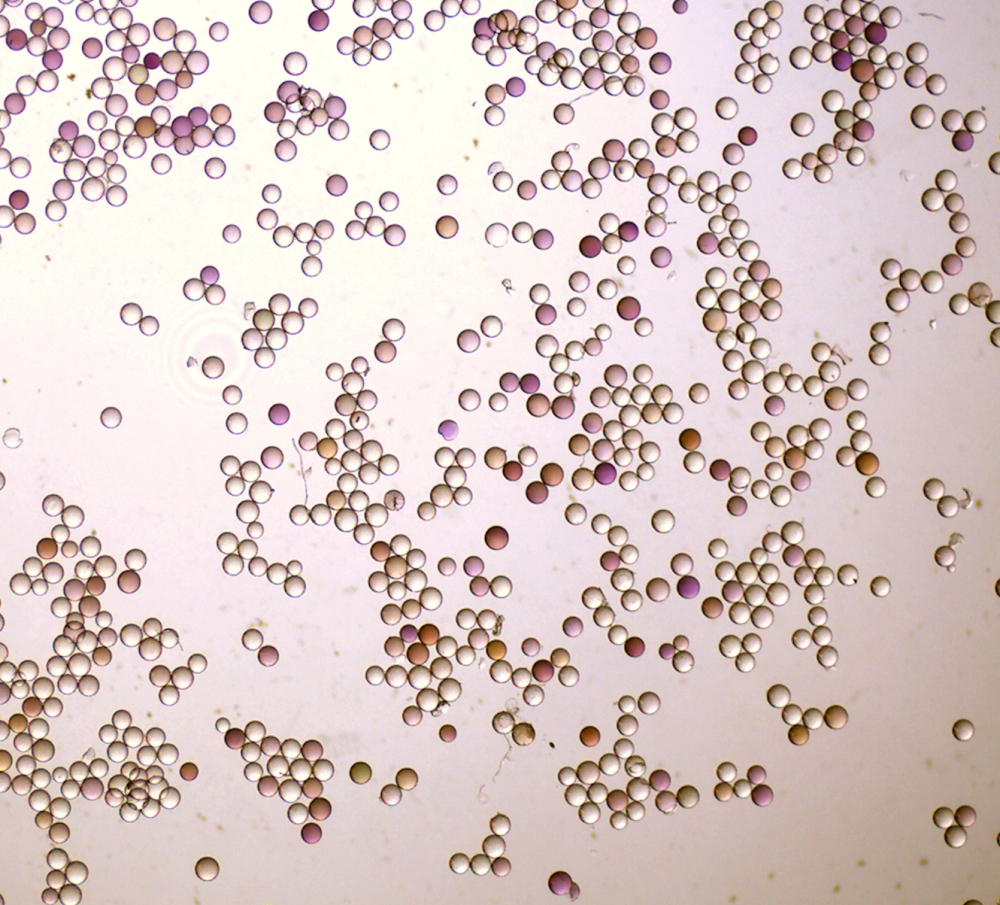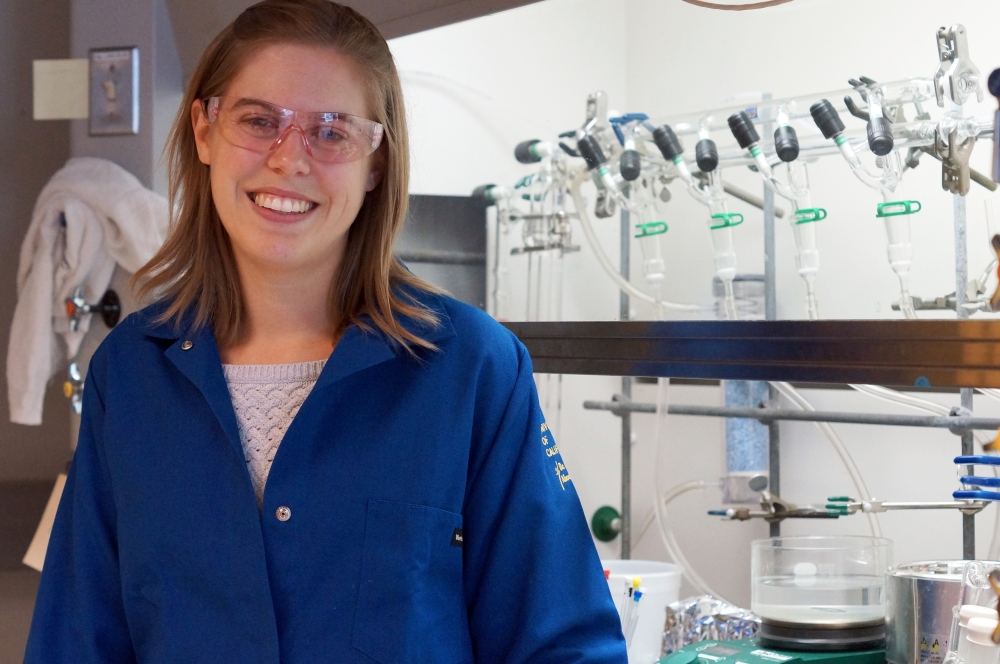
Ms. Clean

Blood may be thicker than water, but for UC Santa Barbara chemist Abby Knight the two liquids share an uncommon common bond.
Knight, a postdoctoral scholar in the Hawker Group, would like to take what she learned from her doctoral research about removing a metal from water and extracting a different metal from human blood and apply similar concepts to develop metal-coordinating polymeric materials — a diverse group of organic components used in engineering.
At UC Berkeley, where Knight earned her doctorate, she developed a novel way to remove hexavalent chromium — the chemical at the heart of the Erin Brockovich story and the eponymous 2000 movie — from water. Knight modified tiny plastic microbeads coated with peptoids — a class of synthetic molecule — so that their “arms” grabbed onto molecules of the toxic metal, a process that helped to decontaminate water.
Before Knight can do that, she needs to learn more about polymer synthesis and how to make materials out of polymers — and she is in the right place to accomplish that. After all, Craig Hawker, director of the California Nanosystems Institute and the Dow Materials Institute and co-director of the Materials Research Lab, is an expert in polymer synthesis and materials chemistry.
“Craig has been very supportive and helpful in connecting me to different people both in his lab and on campus,” Knight said. “I came to UCSB to gain an engineering perspective for my work and the Hawker Group is the perfect place for me to do that.”
Currently, Knight is working toward developing polymeric materials with unique architectures and both bioengineering and therapeutic applications. For example, Knight seeks to explore natural marine products involved in metal coordination. “I think these would be interesting to mimic with polymeric materials,” she said. “This is something I am interested in that relates to and builds on my doctoral research."
Knight heard about these natural products at a conference and was excited to discover that chemistry professor Alison Butler works with marine molecules. Knight also talked David Low, a professor in the campus’s Department of Molecular, Cellular, and Developmental Biology, who is excited about the biological applications of these new polymeric materials.
“I love the interdisciplinary nature of research at UCSB,” Knight said. “It’s a very collaborative school.”
She is fascinated by finding more possible ways for controlling self-assembly of polymeric materials. “I am interested in developing polymers and methods that will selectively bind two different metals in the appropriate environment,” Knight explained. “Natural proteins serve as antibiotics in the body by binding to metals like manganese and iron. These metals are required for bacterial growth so if you remove them, the bacteria die. I want to mimic the capabilities of these proteins and make self-assembling materials that will act as a way of aiding the body’s natural immune response.”
For now, Knight is focusing on developing novel materials that fit these specifications. Once that is accomplished, she can test them on bacterial cultures in vitro. These materials could provide a complementary strategy to current antibiotics and set the stage for future materials inspired by functional proteins.



